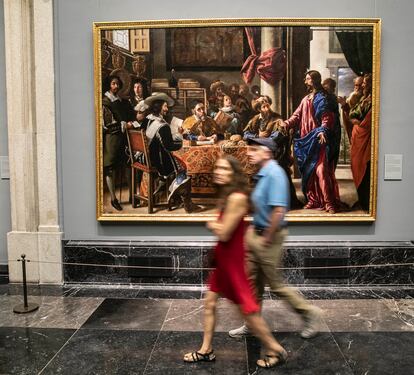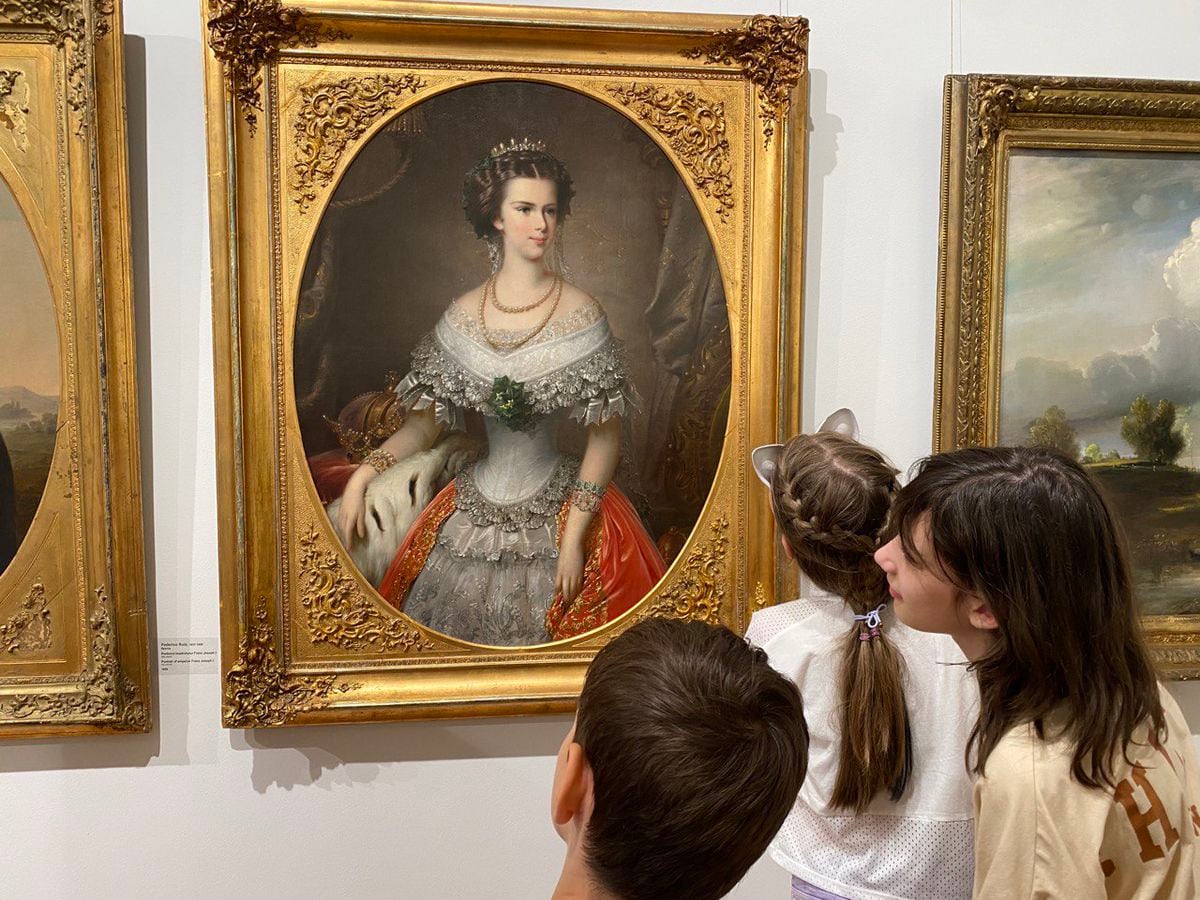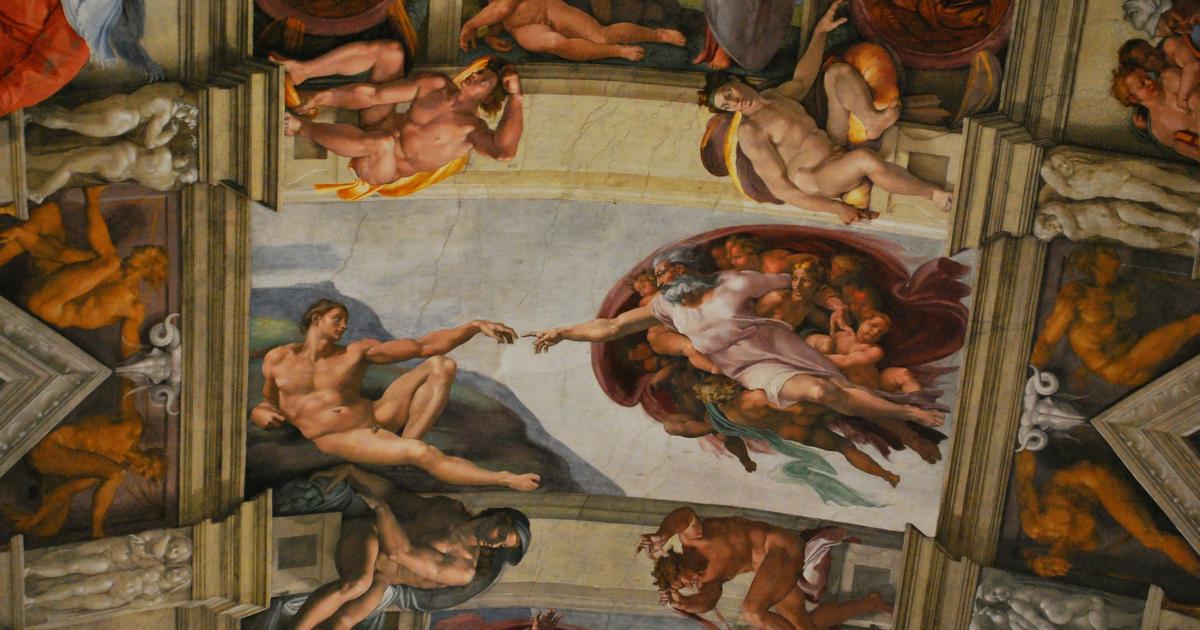Estrella de Diego (Madrid, 64 years old) moves through the rooms of the Prado Museum with the same ease as in her own home.
Academic of Fine Arts, researcher, patron saint of the Prado and columnist for EL PAÍS, among other things, she is the author of a good handful of books as relevant as
Women and painting in nineteenth-century Spain
(1987) and
El andrógino sexuado.
Eternal ideals, new gender strategies
(1992),
Sad Warhol
(1999) or
Dear Gala
(2003).
These days her latest work is going on sale:
El Prado inadvertent
(Anagram), an essay loaded with personal memories with which the author outlines a sentimental and intellectual journey through the museum that she knew from her parents when she was very young;
a knowledge that devotees of the museum such as Ernst Gombrich, Borges, Michel Foucault, Ángel González, Francisco Calvo Serraller, Antonio Bonet or Jonathan Brown were responsible for enlarging.
Without forgetting the last two directors, Miguel Zugaza and Miguel Falomir, to whom the writer dedicates the book for having always opened the doors of the museum to her.
More information
Estrella de Diego: "I have written a book against books"
But as we all know, those doors have not always been open in recent times.
The idea of capturing her knowledge and her love for the Prado in a book occurred to Estrella de Diego about seven years ago, during a seminar given in 2015 dedicated to what she calls the unnoticed of the Prado: painters, Afro-descendants, excluded, still lifes or the 19th century.
The seminar had a second edition in 2017 and this time little-known departments were incorporated into the museum: photography in the prints cabinet and the restoration workshop.
In his personal life, De Diego suffered the death of his parents and an event that turned his life upside down: the complete flooding of his home with the destruction of almost all his documents, books and memories. .
Light of luggage, she contemplated with astonishment the arrival of the coronavirus and the transformation of our lives as we knew them.
The rooms of the Prado, usual refuge when things were bad for him, were closed down and there were no more excuses to postpone writing.
The result is an enjoyable 296-page journey in the wake of Eugenio D'Ors' famous guide,
Three Hours at the Prado Museum
.
There is no shortage of stops at the museum's most glorious moments:
Las meninas, Goya's majas,
El Bosco's Garden of Earthly Delights or
Rogier van der Weyden
's Descent .
They are iconic works that are difficult to get enough of and for which the visitor returns again and again.
But what the author wanted to highlight is what she calls the inadvertent Prado (“not unknown”, she warns) with which the seminars from which this volume was born were nurtured.
Transplants and miracles
When the writer is asked to choose three works with which to explain the 21st century Prado that she so wants to highlight, she does not need to use the location map provided to visitors at the museum entrance.
The first painting is on the ground floor, in room 051A, the space dedicated to Gothic painting whose walls have just been redone in intense blue.
The table is titled
Miracles of the medical saints Cosme and Damian
and it was painted by Fernando del Rincón around 1510. The painting tells two stories, two miracles.
The one that gave the writer a remarkable feeling of disgust shows her transplanting a leg belonging to a recently deceased Ethiopian to a white sacristan.
In the lower part of the painting we see the body of the African wrapped in a white cloth.
“It is not one of the best-known paintings”, Estrella de Diego is surprised, “nor does it seem that people wonder where Africa is in the Prado, in addition to the famous visit of the Magi to the newborn Child who, by the way, There are not so many".
To know her theory about the whereabouts of Africa in the Prado, you have to get to the final episode of the book.
“I wanted to give the book an air of a
thriller
and there is no need to anticipate events”.
Diego's star before the painting Doña Juana la Loca by Francisco Pradilla.Álvaro García
The second stop is before
Juana la Loca
(1877), Francisco Pradilla's masterpiece.
The spectacular installation of this gigantic canvas (340 by 500 centimeters) represents how historical painting has gained in consideration in recent decades.
“I remember this painting when I was in the Casón, between stairs, so you couldn't enjoy it.
For me it is one of the jewels of the museum for personal reasons.
That atmosphere takes me back to the small country house where the whole family spent the holidays and where my mother told me: 'go out and don't read so much'.
The smoke from that fire that envelops the queen's hair gives me back intact the aroma that I breathed in the town”.
die for the meadow
Before taking the elevator to go up to the second floor, in the room of the muses, Estrella de Diego pauses for confessions.
She claims that she loves this museum above all things, that she would be willing to die for it, but that she would never run it.
"It is my home.
She gives me inspiration to continue teaching and to investigate.
But my interests do not go there.
I don't want any charge.
My maximum collaboration is carried out as a member of the board of trustees.
Miguel Falomir does exactly the job that I think the museum needs.
Someone who was able to mount
Reencuentro
, the exhibition of the masterpieces at La Galería Central after the closure due to the pandemic, for me is a genius.
How am I going to want to take his place?
'The vocation of Saint Matthew' (1661), oil painting by Juan de Pareja exhibited at the Prado Museum. Álvaro García
Juan de Pareja, the only black painter
The third and last stop takes us to
La vocation de San Mateo
(1661), an oil painting by Juan de Pareja, the only black painter who appears as such in the Prado collection.
De Pareja is portrayed to the left of the composition with his gaze fixed on the viewer and holding a piece of paper with his signature in his right hand.
Juan de Pareja was a Moorish slave in the service of Velázquez.
The author of
Las meninas
granted him freedom in 1654 in Rome, which allowed him to practice the artistic profession from that moment on.
According to the record, De Pareja continued to be linked to Velázquez's entourage.
He is the protagonist of the impressive portrait that Velázquez made of him during his second trip to Italy and is kept in the Metropolitan in New York.
Exclusive content for subscribers
read without limits
subscribe
I'm already a subscriber


/cloudfront-eu-central-1.images.arcpublishing.com/prisa/FGXUL7OIIZAFFCQQ24NITAWEEA.jpg)

/cloudfront-eu-central-1.images.arcpublishing.com/prisa/HCD4VSRM6VHKTEK6OQ5QZXVVO4.jpg)


/cloudfront-eu-central-1.images.arcpublishing.com/prisa/VQTU76CCQRCCFMIRCRGOSKM7UQ.jpg)
/cloudfront-eu-central-1.images.arcpublishing.com/prisa/AQHJW2Z7DBCVXFMN5D4T4IBBYE.jpg)
